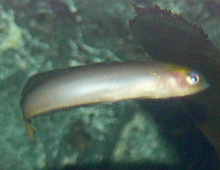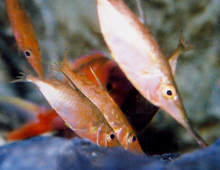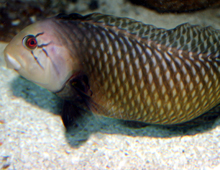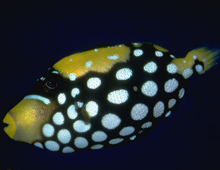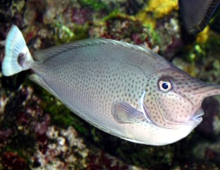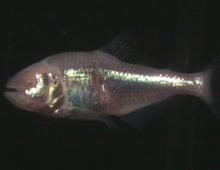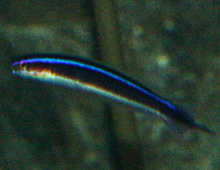
The Bluelined hulafish, or Braun’s hulafish, is a little known species found in the subtropical waters of Australia. It is a small fish reaching a length of three inches with a bright blue stripe running horizontally from head to tail. It is a schooling fish and can be found in large numbers feeding on zooplankton. A nesting species, males of this species are believed to protect the eggs until hatching.

